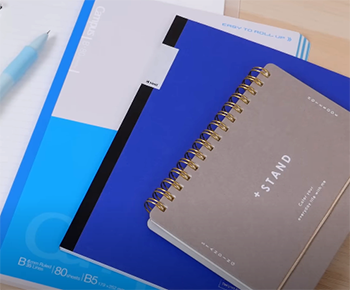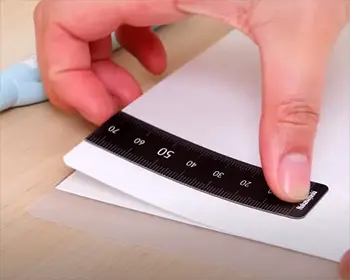Binders, be they for documents or chest-binding purposes, are an essential tool for many of us. But if you’ve ever gone shopping for one, you’d know that they can put quite a dent in your pocket.
So why are binders so expensive?
It’s not just about plastic sheets and metal rings or the fabric and stitches. There’s a lot more at play. This article will delve into the reasons for binders being so expensive and provide answers to some common queries.
Reasons For Binders Being So Expensive
- Quality and Durability Matter

The phrase “you get what you pay for” holds very true when it comes to binders.
High-quality binders are made from durable materials that can stand the test of time.
A binder, especially a chest binder, needs to withstand regular use, sweat, stretching, and washing.
It is essential for a binder to be sturdy, flexible, and resistant to wear and tear. This quality and durability, though, come at a cost.
The better the materials used, the more expensive the binder.
- Manufacturing Complexity
Binders are not just simple folders or pieces of fabric. The design and manufacturing process are complex, which contributes to the high cost. The binder rings are a critical component that needs to be both robust and smooth-operating.
Likewise, chest binders require precise cuts and stitches to provide the right level of compression without compromising on comfort. This complexity in manufacturing is often reflected in the price tag.
- Research and Development
Manufacturers spend a significant amount of time and resources on research and development to produce binders that serve their purpose optimally. For document binders, it’s about improving design, functionality, and user-friendliness.
For chest binders, the R&D process involves ensuring that the binders are safe, effective, and comfortable to wear. This R&D process, while necessary for creating a superior product, also adds to the overall cost of binders.
- Branding and Marketing

The brand name often plays a role in the cost of binders.
Established brands that have built a reputation for quality and reliability usually price their products higher.
These brands often justify their prices with the promise of durability, functionality, and sometimes, style.
Besides, there are also marketing costs to consider.
Brands spend money on advertising their products and these costs eventually trickle down to the consumers.
Exploring Alternatives To Binders
While binders remain a popular choice for many, there are indeed alternatives that one might consider. Let’s discuss five alternatives to both document binders and chest binders in detail, exploring their pros and cons, and compare them with binders.
Document Binder Alternatives
- Accordion Files
An accordion file expands and contracts (much like an accordion), providing multiple compartments for organizing documents.
Pros:
- Excellent for organizing documents by category.
- Portable and convenient.
Cons:
- Not as durable as a binder, may wear out sooner.
- Not ideal for presenting or reading through documents in a meeting.
Compared to a binder, an accordion file provides better categorization but lacks in durability and ease of use during presentations.
- File Folders
File folders are simple, thin folders that hold loose papers together for organization and protection.
Pros:
- More cost-effective than binders.
- Lightweight and compact.
Cons:
- Not as durable, especially for heavy documents.
- Lacks the functionality of a binder, such as the ability to flip pages.
File folders are more affordable and lightweight than binders but offer less protection and functionality.
- Report Covers
Report covers are excellent for presenting reports or proposals professionally.
Pros:
- Sleek and professional-looking.
- Less bulky than a binder.
Cons:
- Limited capacity for paper.
- No rings or mechanism to flip pages.
While report covers give a professional look and are less bulky, they lack the capacity and the easy page-flipping feature of binders.
Chest Binder Alternatives
- Sports Bras
Sports bras can serve as a cheaper and more accessible alternative to chest binders.
Pros:
- More easily available and usually cheaper.
- Can provide some level of compression.
Cons:
- Not as effective in flattening the chest as a chest binder.
- Repeated use for compression can cause discomfort.
Compared to chest binders, sports bras are less effective but are more easily available and typically cheaper.
- Compression Shirts
Compression shirts are another alternative to chest binders.
Pros:
- More comfortable for some people.
- Can be worn like a regular piece of clothing.
Cons:
- Not designed specifically for chest binding, so may not be as effective.
- Can cause discomfort if used for prolonged periods for binding.
While compression shirts can be more comfortable and less conspicuous, they are not specifically designed for chest binding and may not be as effective.
Frequently Asked Questions (FAQ)
The price of a good binder can vary greatly, depending on the type, brand, quality, and where you buy it from. A high-quality document binder can cost between $10 to $50. For a chest binder, the price typically ranges from $30 to $100 or more.
A good chest binder, which is comfortable, durable, and effective, can cost anywhere from $30 to $100 or more. The price depends on factors like brand, quality of material, and design complexity.
Binders serve different purposes. Document binders are used to keep papers organized and protected. On the other hand, chest binders are worn by transgender men, non-binary, and genderqueer individuals who wish to flatten their chest for a more masculine or non-gendered appearance.
If your chest binder is too small, you’ll likely feel discomfort, difficulty in breathing, or pain. You should be able to breathe easily and move without restriction in a properly fitting binder. If you experience any discomfort, it’s probably a sign that your binder is too small.
Final Thoughts
In conclusion, while binders may seem unduly expensive, understanding the reasons behind their pricing can help us appreciate their value. As with any product, you have to weigh the cost against the quality, durability, and functionality.
After all, a binder is more than just a tool – for many, it’s an essential part of daily life.
